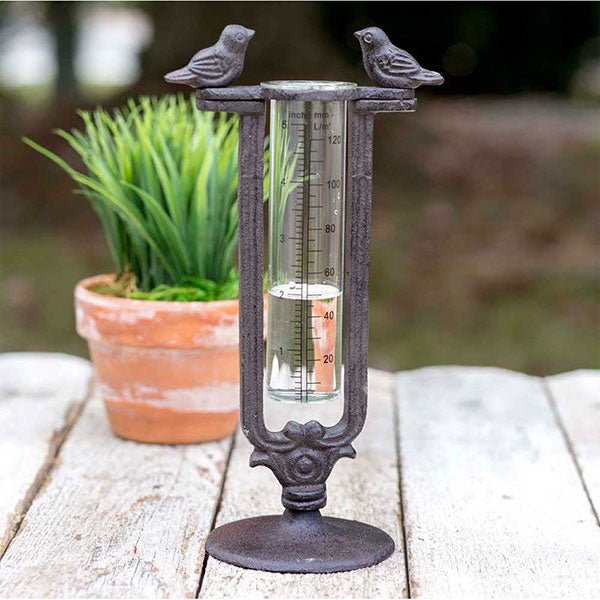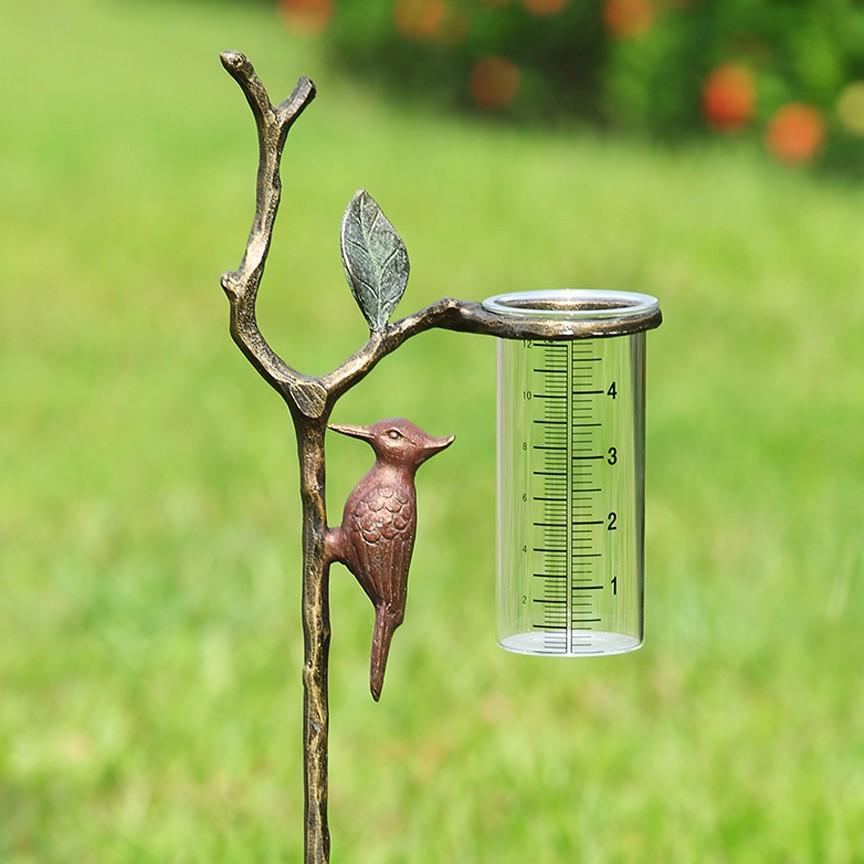Your Go-To Resource on The Rain Gauge: Benefits and Practical Applications
Your Go-To Resource on The Rain Gauge: Benefits and Practical Applications
Blog Article
Comprehending Rain Gauge Measurements: A Complete Guide
Comprehending Rainfall Scale Measurements: A Total Guide is a detailed resource for anyone seeking a much deeper understanding of rainfall gauge dimensions. Rainfall is an important variable in various markets, including weather forecasting, farming, and water resource monitoring. This overview intends to give readers with an extensive understanding of the relevance of rain scale measurements, the various sorts of rain determines offered, and exactly how these dimensions are acquired and translated. Additionally, it checks out the aspects that can influence the accuracy of rain gauge analyses and uses useful tips for getting specific dimensions. Whether you are a specialist in the area or just have a curiosity regarding rainfall measurement, this overview will certainly outfit you with the knowledge needed to successfully utilize rain scale measurements.
The Significance of Rain Scale Measurements
The value of rain gauge dimensions depends on their role as a critical device for precisely keeping an eye on and evaluating precipitation levels - The Rain Gauge. Rain gauge dimensions offer valuable information that aids meteorologists and hydrologists recognize patterns and patterns in rains, which subsequently help in various areas such as agriculture, water source management, and climate research

Precise rains measurements are crucial for agriculture as they help in figuring out watering requirements, crop development, and return forecasts. Farmers depend on this details to make informed decisions regarding when to sprinkle their crops, stopping water wastefulness and guaranteeing ideal plant health and wellness. In addition, rains information helps in evaluating the influence of droughts or excessive rainfall on crop production, enabling farmers to take ideal actions to minimize losses.
Water resource management heavily counts on rainfall scale dimensions to determine the amount of water readily available in storage tanks, lakes, and rivers. Accurate measurements make it possible for water managers to make educated decisions regarding water allowance and circulation, ensuring sustainable use and preventing shortages. This info is specifically critical in areas where water deficiency is a pushing issue.
Moreover, rain gauge measurements play a vital role in climate research. By properly gauging rainfall over extended durations, researchers can assess lasting climate patterns and identify changes in precipitation patterns due to environment modification. This data helps scientists and policymakers create methods to adapt to and mitigate the results of environment modification.
Types of Rainfall Gauges
There are numerous kinds of rainfall evaluates used to gauge precipitation precisely. Each kind has its very own advantages and constraints, making them suitable for different objectives and atmospheres.
The most usual type of rainfall scale is the basic round gauge. It is composed of a cylindrical container with a broad funnel-shaped top to collect rain (The Rain Gauge). The water is then channelled right into a finished determining tube, permitting for precise measurement of the quantity of rains
One more kind is the weighing rainfall scale. Evaluating rain assesses are specifically helpful in locations with frozen precipitation or hefty rains, as they are not influenced by spraying or evaporation.
Tipping bucket rainfall determines employ a system that suggestions a tiny bucket each time it gathers a specific amount of rainwater. The number of ideas is videotaped and used to calculate the rainfall. This kind of gauge is frequently made use of in automated climate stations due to its reduced maintenance demands and capability to give real-time information.
Ultimately, there are radar-based rainfall determines that usage radar modern technology to approximate rains. These assesses determine the intensity of rainfall in a specific location by analyzing the reflected radar signals. They are particularly helpful for measuring precipitation over huge areas or in remote places.
Just How Rain Scale Measurements Work
Rain scale measurements are based on the concept of gathering and determining the amount of precipitation. These tools are created to catch rainwater and give a precise measurement of the rainfall in a particular location.
One of the most common sort of rainfall scale is the typical round gauge. It includes a round container with a wide opening at the leading to gather rainwater. The accumulated Home Page water is after that funneled into a gauging tube, which is adjusted to provide the dimension in units of length, generally inches or millimeters.
One more sort of rain gauge is the tipping pail gauge. It makes use of a seesaw-like mechanism with two pails that tip when they reach a specific weight threshold. Each idea of the container represents a details volume of rains, permitting accurate measurements.
Some innovative rain determines are furnished with digital sensors that immediately document and transmit information. These sensors make use of various modern technologies such as ultrasound or laser to measure the quantity of rainfall accurately.
Aspects Affecting Rain Gauge Accuracy
Environmental factors such as wind, temperature, and atmospheric pressure can considerably impact the accuracy of rain gauge dimensions. Adjustments in atmospheric pressure can likewise influence the precision of rain gauge dimensions, as they can modify the rate at which rains is accumulated.
Functional variables, on the other hand, refer to factors associated with the style, installation, and maintenance of the rainfall gauge. The positioning of the rainfall gauge in a location their explanation with blocked air flow or near buildings or trees can result in incorrect readings as a result of obstruction or splattering of rainfall. Moreover, incorrect calibration or uneven upkeep of the rain scale can likewise impact its accuracy.
To make sure the accuracy of rainfall scale measurements, it is important to consider these variables and take suitable actions. This might involve picking a suitable location for the rainfall gauge, guaranteeing correct setup and upkeep, and on a regular basis calibrating the tool. By attending to these factors, precise and dependable rains measurements can be gotten, which are important for numerous applications such as weather condition forecasting, hydrological research studies, and farming.
Tips for Precisely Gauging Rainfall
To make sure accurate rains dimensions, it is essential to apply specific techniques and strategies when making use of a rainfall gauge. Below are some suggestions for properly measuring rainfall:
Appropriate Positioning: Put the rainfall scale in an open location, away from trees, buildings, and various other obstructions that may hinder the rains collection. It needs to be positioned on a degree surface area to avoid water pooling or overflow.

Review the Scale Correctly: When taking measurements, checked out the water level at eye degree from the base of the curve. Avoid parallax mistakes by straightening your sight straight with the water level.
Constant Time Interval: Set a consistent time interval for determining rains, such as every 24-hour or after each rainfall occasion. This guarantees accurate tracking and comparison of precipitation data.
Document Measurements Promptly: Record rains dimensions asap after collection to protect against dissipation or splilling. Utilize a rainfall scale with an integrated data logging attribute for automated recording.
Verdict
To conclude, understanding rainfall gauge measurements is critical for precisely measuring rains. Various sorts of rain assesses are available, each with their very own advantages and limitations. It is important to take into consideration aspects special info that can affect the precision of rainfall gauge dimensions, such as wind, positioning, and dissipation. By adhering to the ideas provided, one can make certain a lot more accurate and dependable rains dimensions.
Recognizing Rainfall Gauge Measurements: A Full Overview is an extensive source for any person looking for a much deeper understanding of rainfall gauge measurements. Whether you are a specialist in the area or simply have a curiosity concerning rains measurement, this guide will furnish you with the knowledge needed to successfully make use of rain gauge measurements.
The most typical kind of rainfall scale is the conventional round scale.The most common type of rain gauge is the common round scale.Another type of rain gauge is the tipping container gauge.
Report this page